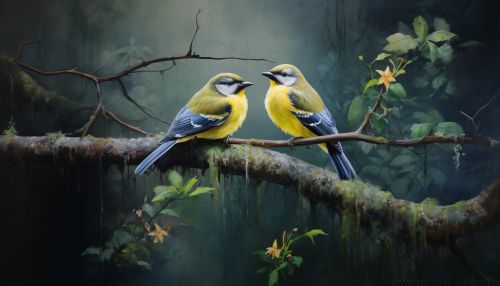The Science of Animal Mating Systems and Sexual Selection
Overview
Animal mating systems represent the way in which a species organizes its reproductive behavior. The science of animal mating systems and sexual selection is a complex field that involves the study of evolutionary biology, ethology, and ecology. It aims to understand the mechanisms and outcomes of sexual reproduction in different species, and how these systems have evolved over time.
Animal Mating Systems
Animal mating systems can be broadly categorized into three types: monogamy, polygamy, and promiscuity. Each of these systems has its own unique set of characteristics, advantages, and disadvantages, and is influenced by a variety of factors such as environmental conditions, availability of mates, and parental investment.
Monogamy
Monogamy is a mating system in which an individual mates with only one partner during a breeding season or over the course of its life. This system is relatively rare in the animal kingdom, with only about 3% of mammalian species exhibiting monogamous behavior. Monogamy can be classified into two types: social monogamy and sexual monogamy.


Polygamy
Polygamy is a mating system in which an individual mates with multiple partners. There are three types of polygamy: polygyny, polyandry, and polygynandry. Polygyny, where one male mates with multiple females, is the most common form of polygamy in the animal kingdom. Polyandry, where one female mates with multiple males, is less common. Polygynandry, where multiple males mate with multiple females, is the least common form of polygamy.
Promiscuity
Promiscuity is a mating system in which individuals mate with multiple partners without forming long-term bonds. This system is common in species where there is little to no parental investment in offspring.
Sexual Selection
Sexual selection is a concept first introduced by Charles Darwin in his book "The Descent of Man, and Selection in Relation to Sex". It refers to the process by which certain traits become more or less common in a population due to their impact on the reproductive success of their bearers.
Intrasexual Selection
Intrasexual selection occurs when individuals of one sex compete with each other for access to mates. This competition can take many forms, including physical combat, displays of strength or skill, or the establishment of territories.
Intersexual Selection
Intersexual selection, also known as mate choice, occurs when individuals of one sex choose mates based on certain desirable traits. These traits can include physical characteristics, behaviors, or resources controlled by the potential mate.
Evolution of Mating Systems and Sexual Selection
The evolution of mating systems and sexual selection is a complex process influenced by a variety of factors. These factors can include ecological conditions, population density, and the availability of resources. The study of this evolution provides insights into the diversity and complexity of reproductive behaviors observed in the animal kingdom.
